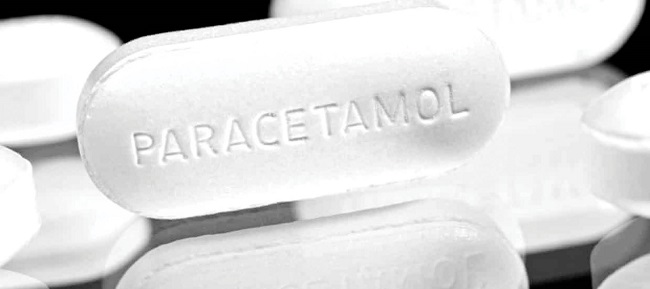Certainly paracetamol, a common over-the-counter painkiller, is a quick fix for aches, pain and high body temperature caused by illnesses such as colds and flu. The pain relief medication is suitable for most people to take if it is taken it at the right dosage.
Surprisingly, paracetamol in people with an allergic reaction can have a serious side effect. It can act as a trigger to cause sensitive airways to tighten, swell and produce excess mucus the very first time the drug is taken or suddenly, even after taken the drug many times before. Its injection in allergic individuals can also cause a rash and swelling (especially of the face/tongue/throat), flushing, low blood pressure and a fast heartbeat.
Professor Soji Ige, a chest physician at the University College Hospital (UCH), Ibadan, Oyo State, says that such things as a persistent cough, tightness in the chest, wheezing, shortness of breath and difficulty breathing could be side effects to medicines like paracetamol, aspirin and ibuprofen in allergic individuals.
According to him, in allergic individuals, including asthmatics, painkillers such as ibuprofen and aspirin can cause a reversible narrowing of the airways in response to a stimulus, and so give rise to these symptoms.
Professor Ige stated that drugs such as paracetamol, ibuprofen and aspirin can trigger allergic reactions in some individuals and are better avoided as other triggers of asthma such as dust, house mites, fumes and pollens in this group of people.
He added, “They can cause bronchospasm, a major problem in asthma. Immediately there is a trigger, the windpipe narrows, and they start to wheeze.
“We tend to run away from prescribing ibuprofen, for instance, for asthmatics because you don’t know who is going to have an asthmatic attack after taking it. It exacerbates asthma just like aspirin and other drugs called nonsteroidal anti-inflammatory drugs (NSAIDs).
“More importantly, people with severe allergic rhinitis that have nasal polyps tend to be more sensitive to developing NSAIDs-induced asthma.
“However, people who have asthma usually take paracetamol safely to relieve fever and pain. Very rarely, even paracetamol may make asthma worse, which has prompted further studies to explore the link between paracetamol and asthma.”
The expert said allergic reactions usually happen quickly within a few minutes of exposure to an allergen, causing sneezing, a runny or blocked nose, red, itchy, watery eyes, wheezing and coughing and a red, itchy rash. Aside from all these, it tends to also worsen eczema symptoms.
Professor Ige, however, stated that individuals with a family history of allergy particularly need to be mindful of the possibility of also experiencing allergic reactions to pain killers, including paracetamol, and be careful with the use of just any drug.
Dr Akinniyi Aje, a pharmacist and lecturer at the Department of Clinical Pharmacy and Pharmacy Administration, University of Ibadan, said that aside the fact that allergic reaction to paracetamol is a rare side effect; many people wouldn’t link a persistent cough, tightness in the chest, wheezing, shortness of breath and difficulty breathing to such a thing as paracetamol.
He declared “Most people take paracetamol arbitrarily, they don’t term the medicine as a drug per se. Most of the time, they take it alongside other medicines like an antimalarial drug. In our environment, even if there is a reaction, they might not link it to paracetamol. It is just that people have not reported it. It does not mean that it cannot happen.”
Nonetheless, Dr Aje stated that paracetamol is safe to be taken at recommended doses. Adults are to take one or two 500mg tablets of paracetamol, up to four times each day. It’s absolutely essential to wait four hours between doses. The maximum dose is four doses, which equates to up to eight 500mg tablets in a single day.
Dr Aje, however, said that paracetamol is not safe to be used by those with liver or kidney problems, those who drink more than 14 units of alcohol per week, and those who take medication for epilepsy. Besides, anybody taking the blood-thinner warfarin also needs to speak to a pharmacist before taking paracetamol.
He added that intake of paracetamol is reported to cause gastric disturbance in some individuals, although not common, urging people to always read leaflets in their medicine packages and report to changes they notice after they take any medicine to the hospital.
Towards the end of November 2014, the FDA issued a “guidance for industry,” about the “rare but serious skin reaction” that can occur on the ingestion of paracetamol. The reaction, FDA said, could happen the very first time the drug is taken, or suddenly even if a person has taken paracetamol (or a drug containing paracetamol) many times before.
First is “acute generalised exanthematous pustulosis.” It looks like a form of psoriasis, with a pus-filled red rash that can appear on the upper part of your body and even on the face. It was followed by Stevens Johnson Syndrome (SJS), a devastating condition that usually begins with flu-like symptoms, followed by a painful purplish rash that can spread to the eyes and ears. This is followed by blisters and actual detachment of the upper layer of the skin.
When the SJS skin lesions cover over 30 per cent of the body it’s called the Toxic Epidermal Necrolysis (TENs). It is potentially fatal, causing extensive peeling of the skin that is so bad that some people do not survive. Common symptoms of the skin reaction are skin reddening, blisters and rash.
In 2014, researchers at the University of Benin reported a case of paracetamol and Non-Steroidal AntiInflammatory Drug (NSAID)-Induced seizures in a 42-year old woman with HIV Infection. She was given two tablets of paracetamol (1000 mg) on account of fever.
These seizures occurred at different times, first with paracetamol and then diclofenac (a NSAID). She was concurrently on anti-retroviral drugs and antibiotics. She had used paracetamol several times in the past prior to being diagnosed with HIV infection without any observed adverse effects. It was in the Tropical Journal of Pharmaceutical Research.
Allergic reactions to paracetamol have been widely reported and studied in various parts of the world. Some of the reported reactions to paracetamol also include rhinitis, conjunctivitis and abdominal pain. Moreover, in a study, researchers said children given paracetamol in their first two years of life may be at greater risk of asthma.
The study had looked at 620 children who were considered at high risk of an allergic disease because they had a family member with illnesses such as asthma, eczema, hay fever or a severe food allergy. They rang families every four weeks for the first 15 months, then at 18 months and at two years to ask how many days the child had had paracetamol in the previous weeks.
The study by the University of Melbourne, which was presented to the European Respiratory Society International Congress in Paris, stated: “Our findings provide more evidence that paracetamol use in infancy may have an adverse effect on respiratory health for children with particular genetic profiles and could be a possible cause of asthma.”
YOU SHOULD NOT MISS THESE HEADLINES FROM NIGERIAN TRIBUNE
Lagos Is Second Least Liveable City In The World For 2021
Lagos is the second least liveable city in the world for the year 2021. This is according to the most recent annual ranking put together by the Economist Intelligence Unit (EIU)…
CLAIM 1: A Twitter user claims UNICEF said any efforts to block children from accessing pornography might infringe their human rights.
VERDICT: MISLEADING!








